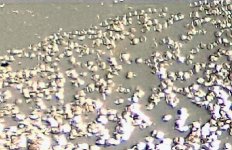ctwo
Active member
- May 16, 2019
- 247
- 145
- Parrots
- Mango the Indian Ringneck and Peach the Cockatiel; Kiwi found a new home
Relevant to birds, does anyone know what typical parasite and bacterial infections one can observe under an amateur microscope (1000x), or what can I look for related to stool samples and swabs, and maybe a blood sample if I get something from a discarded feather?
My vet said that the cockatiel "might" have some kind of parasite but it was not conclusive, so something to watch...
This seems like a good start, but looking for moer, maybe even just search terms:
https://www.finchaviary.com/Maintenance/FecalSmear.htm
My vet said that the cockatiel "might" have some kind of parasite but it was not conclusive, so something to watch...
This seems like a good start, but looking for moer, maybe even just search terms:
https://www.finchaviary.com/Maintenance/FecalSmear.htm
